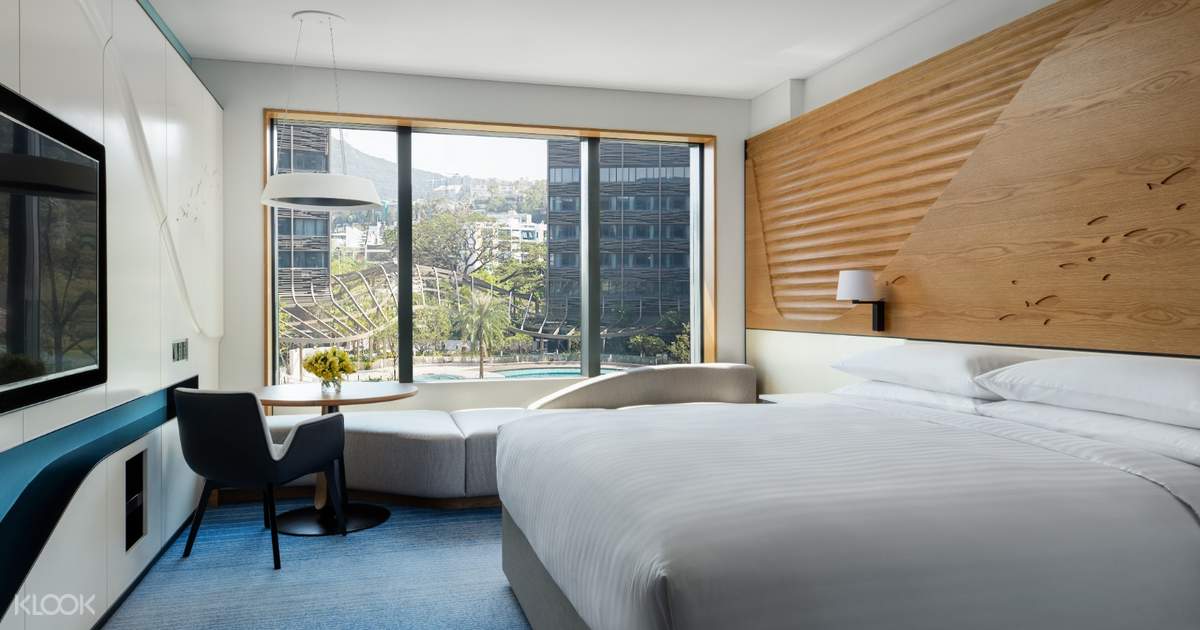Exclusive: Ocean Park Marriott Hotel “Stay and Dine Vacation” Package with dinner from Lai Sun Dining restaurants & 1-night accommodation with breakfast
Get amazing deals here when you book this 1-night accommodation with breakfast and laisun dinner credit at hong kong ocean park marriott hotel!
Get amazing deals here when you book this 1-night accommodation with breakfast and laisun dinner credit at hong kong ocean park marriott hotel!
Hong Kong Ocean Park Marriott Hotel
- Address: 180 Wong Chuk Hang Rd, Wong Chuk Hang
- How To Get There: Ocean Park MTR Station Exit B, 1 minute walk
Additional information
| Package deals | – Stay and Dine Vacation Package + HK$800 Lai Sun Dining Cash Coupons (Fri-Sat, PH&eve) |
|---|






by Anna
Super great experience to stay at Marriott Ocean Park for staycation! We are very enjoying the services, hotel room, dinner at prohibition as well as the breakfast. Hotel room is very neat, clean and new. Good service no matter at front desk or concierge or restaurant or room service. Good atmosphere in general. Good food at prohibition and buffet breakfast. Indeed really enjoy the stay here! Definitely will recommend to friends and we are love to come again for restaurant and stay!
by Wendy
Ocean Park Marriott hotel is very close to ocean park walk about 2 min, it was a resort type hotel, swimming pool is quite big, food is delicious and up to standard, service is good too, it worth for me to visit again!
by CHI
The environment is relaxing. The room is capacious and well equipped. Swimming pool is large and good for family with children. Takeaway food for dinner in Marina Cafe is a bit small in portion and expensive despite discount yet taste good. Breakfast has reasonable food choice but limiting dining time to an hour is not pleasant at all. Service in general is good. After all the package deal is value for money!
by Lai
4-star hotel with 5-star service. The hotel is conviniently located, only 5 minutes walk diatance from the Ocean Park MTR station. In the moddle of hotel complex area is a big swimming pool but during the weekday the Center Lagoon is closed. Guest room is rather small, but so clean and new, with a huge LCD TV. Most AC power sockets have USB charger port. In overall I am so satisfied with the hotel service and KLOOK package that include buffet breakfast and amazing steak dinner at Prohibition Grill House.
by Chun
The hotel room was very comfortable and the environment was so relaxing. The food at the Chinese restaurant was surprisingly good. You may consider bringing a bottle of wine to enjoying the free corkage and make the dinner more enjoyable with no extra cost.
by Pui
Nice swimming pool and atmosphere ! Feel like in resort! The Resturant food is good and nice service! Would buy again if this package available!
by Mau
This Klook package is a great deal, including a nice steakhouse dinner and parking. The room looks clean although there are soooo many guests in the hotel during weekend.